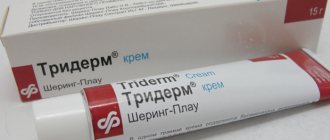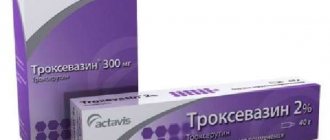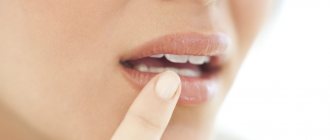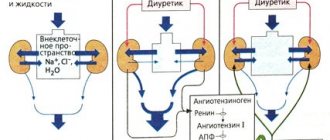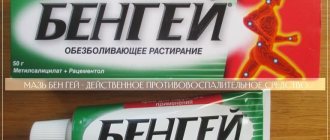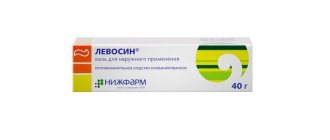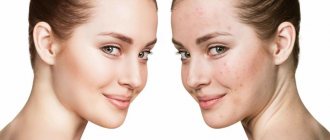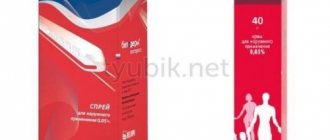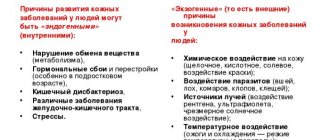Causes of leg swelling
Swelling of the legs is a consequence of the underlying disease. They are not considered a disease, but a symptom. Reasons for their appearance:
- Heart failure. It is characterized by impaired circulation throughout the body, changes in blood quality, and the appearance of swelling in the legs, arms, and other parts of the body.
- Kidney diseases. With insufficient functionality of these organs, fluid in the body is retained, mostly accumulating in the lower extremities and on the face.
- Hormonal disbalance. The swelling is permanent and is present in various parts of the body.
- Pathologies of blood vessels and veins - thrombosis, varicose veins, etc. The presence of edema only on one of the legs, less often on both. It is localized in areas of vein damage, so this swelling is often uneven.
- Lymphatic diseases. They are characterized by unilateral dense edema, which practically does not change during the day.
- Joint diseases. The swelling is located near the affected joint.
- Injury or infection of the skin. Liquid accumulates directly near the damage. The more severe the injury or skin defect, the more pronounced the swelling.
- Obesity. It disrupts the functioning of many systems in the body.
- Pregnancy. An increase in the level of sex hormones and an increase in the size of the uterus lead to the formation of physiological swelling of the legs.
- Inactivity, prolonged sitting or standing. It disrupts blood circulation throughout the body and in the limbs, causing stagnation of blood and lymph.
- Incorrectly selected shoes and clothing. Compression of the vessels of the legs is fraught with the appearance of swelling.
- Hot weather. At high temperatures, edema can also appear in healthy people.
- Excessive physical activity. Frequent lifting of weights and participation in strenuous sports are often accompanied by fluid accumulation in the extremities.
The cause of edema can only be determined after a comprehensive diagnosis. If you complain about pastiness, you should first consult a therapist.
Cosmetic preparations
As a rule, the effect of cosmetics is based on rejuvenation, a tightening effect, and also on masking defects.
Cosmetologists have developed products separately for both sexes. This does not mean that women cannot use men's cosmetics, just that the effect will not be as noticeable, since men's skin has a slightly different structure.
For women
There are cosmetic products that, according to reviews, do not eliminate severe swelling and bags under the eyes, but prevent their occurrence and can cope with minor defects. Such products include:
- Bio-eye cream “Black Pearl” (Against dark circles and bags under the eyes) - softens the skin;
- Eye cream “Green Pharmacy” (Against puffiness and bags under the eyes) - provides care to the skin around the eyes;
- Lifting gel for the skin around the eyes Green mama “Blueberry and plantain seed gel” - protects against premature aging of the skin under the eyes.
Cosmetics for bags under the eyes for women:
| Name | Action |
| Multi Correction Anti-Age (ROC) | Eliminates both age-related changes and bags |
| Intensive care for the skin around the eyes RevitaLift (L'Oreal) | Eliminates dark circles after insomnia |
| Eye cream-gel with shea butter (KORA) | Reduces the depth of wrinkles and skin laxity |
| Broad acting hyaluronic cream (Librederm) | Has a rejuvenating effect |
| LiftActiv Supreme Eye Cream (Vichy) | Prevents sagging of the upper eyelid |
| Instantly Radiant (Darphin) | Eliminates bag marks and bruises |
| Absolute Skin Recovery Cream (Orlane) | Removes visible signs of skin laxity (bruises) under the eyes |
| Forse Vitale De-puffing eye cream-gel (Swiss Line) | Moisturizes and removes swelling |
| Gel against bags under the eyes Dioptigel Reducteur des Poches (Lierac) | Eliminates swelling on the face |
| Eye cream Hydraphase Intense (La Roche-Posay) | Prevents the skin from losing moisture and tightens it |
| Phyto-gel eye Contour Gel-xt (Cellcosmet) | Eliminates morning bruises and gives the skin a velvety effect |
You should pay attention to the expiration date. Thus, Forse Vitale De-puffing eye gel from Swiss Line is an effective remedy for bags and swelling, but due to its natural composition it cannot be stored for a long time.
Most drugs do not contain labels in Russian, as they are manufactured abroad.
For men
Representatives of the stronger sex, just like women, face the problem of swelling under the eyes. For them, cosmetologists have developed special products taking into account the characteristics of their skin type.
Effective men's gels and creams to eliminate puffiness and signs of fatigue:
| Titles | Action |
| Faberlic For Men eye gel cream | Eliminates signs of fatigue and dark circles |
| Anti-stress gel for the skin around the eyes (Clinique) | Cools the skin and gives a rested look |
| Gel-lifting Intensive Anti-Fatigue Eye Lift (Givenchy Man) | Smoothes wrinkles, moisturizes skin |
| Anti-wrinkle balm for the skin around the eyes (Clarins Men) | Gives a matte appearance to the skin, lightens bruises |
| Revitalizing Eye Contour Cream (Shiseido Men) | Moisturizes the skin around the eyes, maintains hydration throughout the day |
| Dior Homme Dermo System Eye Serum (Dior) | Strengthening the skin around the eyes, eliminating signs of fatigue |
What does it contain?
Creams and ointments for swelling of the legs contain components that have a positive effect on the condition of blood vessels and local blood and lymph flow. Possible components of the product:
| Formulation component type | Action |
| Warming up | Accelerates blood circulation, relieves muscle spasms. Snake and bee venoms, pepper extract, camphor, and turpentine have a warming effect. |
| Cooling | Quickly relieves fatigue, relieving the symptoms of swelling. Essential oils of eucalyptus, menthol, mint are added to the ointments. |
| Anesthetic | Necessary for severe pain. The composition may contain novocaine, ibuprofen, diclofenac |
| Anticoagulant | Prevents the formation of blood clots, thins the blood. Iodine and heparin have this effect. |
| Decongestant | Resorption of swelling, elimination of heaviness in the legs. For this purpose, rutin is considered the most popular |
The composition usually includes only some of the components. The type of ointment for a tumor on the leg is selected individually depending on the accompanying symptoms.
For bruises and sprains - warming agents
For a local anesthetic, distracting effect for injuries and sprains, swelling, you can also use ointments that improve metabolic processes due to the warming effect, improving blood circulation in damaged soft tissues. These include synthesized drugs, as well as ointments that contain snake venom, bee venom, warming agents, oils:
Ingredients: nonivamyl and nicoboxyl. Price 20g. 250-280 rub. |
Ingredients: capsaicin, ethylene glycol salicylate, ethyl nicotinate. Price 50g. 150-200 rub. |
Ingredients: Nicoboxil and Nonivamide |
Ingredients: bee venom, methyl salicylate and allyl isothiocyanate. Price 150-170 rub. |
Ingredients: oil of clove flowers, camphor, tincture of capsicum, mustard oil, cinnamic alcohol, thymol, eucalyptus oil, methyl salicylate, Chloral hydrate. Price 25 gr. 100-140 rub. |
Ingredients: dietary supplement, frankincense (boswellia) extract, capsaicin. Price 100-120 rub. |
Ingredients: Capsicum extract Price: 30 gr. 130-150 rub. |
Ingredients: benzyl nicotinate, nonivamide, racemic camphor, turpentine, dimethyl sulfoxide. Price 30 gr. 150 rub. 50 gr. 170-220 rub. |
Ingredients: Camphor, gum turpentine, salicylic acid, viper venom (snake venom) Price: 30 gr. 130 rub., 50 g. 160-200 rub. |
How do anti-puffiness creams work?
Ointments are necessary to relieve swelling in the legs, eliminate signs of fatigue, and restore local blood circulation. Depending on the components of the composition, they can normalize the condition of blood vessels and veins and relieve pain. Some of the creams are used both for the prevention and treatment of edema.
With a slight pastiness of the legs, local medications may be enough to completely eliminate it. In case of voluminous swelling and other accompanying symptoms, it is necessary to prescribe remedies for internal use, massage, and physiotherapy.
Rules for using creams
On average, topical remedies for leg swelling are applied 1-3 times a day. More accurate information can be obtained from the instructions for use of the medication. Rules for using ointments:
- Apply only to clean skin after hygiene procedures;
- do not mix with other local drugs;
- do not exceed the maximum daily dose;
- rub until completely absorbed or apply under a compress - determined by the instructions;
- Use regularly during the prescribed course of treatment.
Improper use of ointments rarely leads to side effects. Most often, this reduces the effectiveness of therapy.
Effective creams for swelling of the legs
There are many ointments for swelling on the legs. They have a similar effect, but differ in composition and additional properties.
Heparin-based ointments
Heparin ointments for swelling of the legs and feet are highly effective and rarely cause side effects. Types of these drugs:
- Dolobene. Additionally contains dimethyl sulfoxide, dexpanthenol. This allows the drug to quickly relieve swelling, heal skin inflammation and prevent the appearance of trophic ulcers. Used for vein pathologies, injuries, and in the postoperative period. Do not apply to open wounds.
- Hepatrombin. The main active ingredient is supplemented with the action of dexpanthenol and allatonin, due to which the ointment has anticoagulant, regenerating and absorbable properties. Used for swelling of the legs caused by various reasons.
- Heparin ointment. Contains benzocaine and benzyl nicotinate. Anesthetizes, dilates blood vessels, thins the blood. It is used in certain areas with pronounced venous nodes.
- Thrombophobe. It has a minimal number of side effects and contraindications due to the absence of additional ingredients in the composition. Apply only to healthy, intact skin.
If an allergy occurs, the drug can be replaced with a similar product containing heparin. In case of further presence of an allergic reaction, it is necessary to select an ointment with a different main substance.
Products with troxerutin
Troxerutin relieves swelling, has anti-inflammatory, venotonic, antioxidant effects. Used for various vein diseases. Ointments based on it are produced in the form of a gel.
Types of medications for leg swelling based on troxerutin:
- Troxevasin (Troxerutin). Not recommended for gastritis and gastrointestinal ulcers. Apply until completely absorbed 2-3 times a day.
- Indovazin and Troximethacin. In addition to troxerutin, they contain indomethacin. Such gels for leg swelling relieve pain and relieve inflammation. Prescribed for arthrosis, arthritis, bursitis, soft and bone tissue injuries.
- Venolife. The composition includes heparin, which enhances the effect of troxerutin. It has a powerful venotonic effect, quickly relieves swelling, and normalizes the condition of the vascular walls.
Products containing troxerutin are contraindicated for persons under 15 years of age, pregnant women in the 1st trimester, and breastfeeding. The drug in the form of a gel practically does not cause side effects, unlike the tablet form of the drug.
Antithromb
It works due to emoxipine. It has capillary protective, anti-inflammatory, thrombolytic, regenerative, anticoagulant properties. The use of ointment allows you to relieve swelling, restore local blood flow, and reduce the likelihood of trophic changes in the skin and soft tissues.
Heparoid Zentiva
Ointment produced in the form of an emulsion. Effective in preventing the development of thrombosis, eliminating inflammation and swelling of the legs. Sometimes after applying the product, the skin becomes red and urticaria develops. This indicates the course of an allergic reaction, in which the use of the ointment must be stopped.
Menovazin
The composition contains menthol, ethyl alcohol, anesthetic. Due to this, the solution quickly relieves pain in the affected area, restores blood microcirculation, and relieves leg swelling and inflammation. When applied under a compress or bandage, it has a pronounced warming effect.
Herbal ointments
The fewest side effects are observed with ointments with herbal composition. This is due to the milder effect of such drugs. Types of creams for swelling and fatigue of legs based on herbs:
- Venitan. The main active ingredient is horse chestnut extract. Reduces the symptoms of varicose veins, tones blood vessels, reducing the permeability of their walls. The use of ointment is not recommended for thrombosis.
- Venoton. Venotonic, decongestant, capillary protective, anti-inflammatory agent. Approved for use for trophic ulcers, thrombosis, thrombophlebitis.
- Venosal+. Used for the treatment and prevention of diseases of veins and capillaries. Accelerates blood and lymph flow, heals the skin, relieves inflammation, increases the elasticity of blood vessels. The ointment is contraindicated in acute thrombosis.
- Normaven. Eliminates fatigue and heaviness in the legs, normalizes venous outflow. Has a cooling effect.
- Venozol. Regulates microcirculation in the lower extremities. The ointment is indicated for pain, inflammation, swelling in the legs, varicose veins, thrombophlebitis, trophic changes, etc.
- Kashtaplant. Relieves inflammation, heaviness in the legs, restores the condition of veins and capillaries. It has virtually no contraindications.
Ointments with herbal composition often have a cumulative effect; their effect after the first use may be weakly expressed. This is considered the norm. The required result is achieved after completing a course of treatment with such creams.
Lyoton 1000
Available in gel form. Indicated for varicose veins. Used 2-3 times a day. The ointment should be applied until completely absorbed.
Mom comfort
A product approved for use during pregnancy and breastfeeding. Helps relieve swelling and fatigue of the legs. Has a pronounced cooling effect.
Bruise-off
Most often prescribed for injuries and postoperative conditions. Relieves bruises, hematomas, spider veins. Apply a thick layer under the bandage to prevent abrasion.
Vishnevsky ointment
Used in the form of compresses to be applied at night. Indicated for pain, swelling of the legs, and inflammatory processes.
Sophia
Contains bee venom, which relieves pain and quickly relieves swelling. It is recommended to use for pasty legs due to joint diseases.
Ichthyol ointment
A warming agent that restores local blood circulation. It works faster when applied under a bandage or compress. Can relieve pain.
Antistax gel
Developed from an extract of red grape leaves. Tones blood vessels, reduces the permeability of their walls. After eliminating swelling of the legs, it prevents their further development.
Venocorset gel
Like Antistax gel, it contains red grape leaf extract. Improves blood circulation, eliminates heaviness in the legs and swelling. Contraindicated only in case of individual intolerance to the components of the composition.
Venitan gel
Based on the action of horse chestnut seeds. The ointment relieves inflammation, normalizes local microcirculation of blood and lymph, and activates metabolic processes. Has an antihistamine effect.
Rescuer
Ointment, the most common for the treatment of various types of injuries, bruises, abrasions. It has a powerful regenerative effect, acts as an antiseptic, anti-inflammatory and decongestant.
Finalgon
Indicated for swelling of the legs against the background of pain in the muscles and joints. Used for injuries, sprains, dislocations, and diseases of the musculoskeletal system. The ointment has a warming effect.
Relief Advance
Contains shark liver oil essence. The latter is common as a healing agent. The ointment relieves swelling of the legs due to phenylephrine in its composition. The product can also be used on the face to combat age-related skin changes.
Traumeel
Homeopathic ointment with no contraindications. Contains extracts of a large number of plants and herbs. Prescribed for swelling of the legs due to arthrosis, injuries, during pregnancy and after surgery.
Retinoic ointment
The composition includes isotretinoin, a form of vitamin A. Due to its influence, damaged tissues are regenerated, the aging process is slowed down, the elasticity of the skin increases, vascular permeability decreases, and swelling of the legs disappears. This cream works best in combination with other local decongestants.
Zinc ointment
The product has a pronounced anti-inflammatory, regenerating, metabolic effect. With prolonged use, it can dry out the skin, so before applying it is recommended to mix the ointment with baby cream.
Curiosin
The drug is made on the basis of zinc and hyaluronic acid. The ointment heals, relieves inflammation, relieves swelling and heaviness in the legs. Can be used as a remedy for acne.
Hydrocortisone ointment
The composition contains a steroid hormone - glucocorticoid. Eliminates pain, swelling of the legs, inflammation of soft tissues and joints. It has contraindications; it is recommended to visit a specialist before use.
Causes and types
Edema of the lower extremities is an excessive accumulation of fluid in the body. Swollen feet often appear in the evening. Swelling mainly affects the feet and ankles. The pathology becomes short-term or permanent. The causes of the first type are often caused by external damage: bruises, wounds, uncomfortable shoes, drinking too much. It is much easier to eliminate it.
Another type of edema characterizes a specific disease or is caused by the use of medications. If swelling of the lower extremities occurs for several days in a row, you should consult a doctor.
List of diseases that cause swelling:
- Varicose veins are a favorite companion of people who work in a standing position. Constant stress on the legs causes a rush of blood to the feet. The swelling gradually becomes more noticeable and lasts longer. The swelling tends to appear asymmetrically, developing into spider veins. The next stage is blueness of the skin due to dilated veins, pain symptoms;
- kidney diseases. Impaired functioning of the excretory system causes fluid stagnation. The pathology is accompanied by back pain and fever;
- cardiovascular pathologies. Diseases interfere with the free flow of blood. Typical for older people;
- obesity.
Making ointment at home
You can prepare a cream for pasty feet yourself. Popular simple recipes:
- Grate laundry soap on a fine grater, mix with ammonia and camphor. Add turpentine to the resulting mixture. Use ready-made decongestant ointment for feet as needed.
- Boil vegetable oil, add nettle root to it, boil for 3-5 minutes and turn off. After cooling, rub into the desired area.
- Mix turpentine in a ratio of 2 to 1, heat the mixture slightly until a homogeneous consistency is obtained. Apply under a compress or warm socks at night.
- Mix essential oil of mint, lemon balm or lavender with menthol and horse chestnut. Heat in a water bath until smooth. Dilute the cream for swelling of the legs with water before use.
Homemade ointments are less effective than pharmacy ones, and therefore require regular and long-term use. The first result may be noticeable only a few days or a week after starting to use the product.
How to choose the right ointment
The type of ointment is determined by the desired effect of its use. Required composition of ointments depending on symptoms:
- in case of severe pain - with an anesthetic or other painkiller;
- for inflammation - with a non-steroidal anti-inflammatory component;
- for heaviness and fatigue in the legs - with a cooling property;
- slight swelling in the absence of other symptoms - with herbal composition;
- in the presence of dilated veins and vascular networks - with a venotonic substance;
- if there is a tendency to thrombosis - with an anticoagulant;
- for injuries and bruises - with wound-healing properties.
Which ointment relieves swelling from the legs best is determined individually - the components of the composition may act slightly differently depending on the characteristics of the human body.
Often, products have several beneficial actions at once, which makes their choice easier. Creams can be replaced with similar ones if there is no result from use. If there are a large number of contraindications, it is recommended to consult with your doctor.
Ointment with non-steroidal anti-inflammatory drugs
NSAIDs are not just good ointments for bruises, they are quite strong drugs, with side effects and contraindications, they cannot be used for more than 7 days, and also should not be applied to damaged skin. They have a pronounced analgesic effect, relieve inflammation and swelling quite quickly. The table shows almost all types of ointments containing NSAIDs, their contraindications, and side effects.
DiclofenacIndications for the use of NSAIDs: gel and ointment are used for back pain, myalgia, after sports injuries, arthritis, all types of neuralgia, sprains or damage, rheumatoid arthritis, ankylosing spondylitis, gout, radiculitis, inflammation of the sciatic nerve, osteochondrosis (cervical spine), for muscle pain of any etiology, pain due to ligament ruptures, etc. | |||
|
|
|
|
|
|
|
|
IbuprofenContraindications for NSAIDs: children under 7-12 years of age (age restrictions vary for different NSAIDs), with bronchial asthma, allergic rhinitis, urticaria associated with taking acetylsalicylic acid, use with caution in case of impaired liver and kidney function, nasal polyps, pregnancy, lactation , for gastrointestinal bleeding, heart failure (see instructions for Ibuprofen). | ||
|
|
|
KetoprofenSide effects of NSAIDs: Local reactions: burning, tingling at the site of application, slight redness of the skin, bronchospasm, allergic reactions; when applied over large areas, systemic side effects of NSAIDs may occur - nausea, heartburn, diarrhea, headache, fluid retention, etc. | ||
|
|
|
|
|
|
NumesulideInteraction with other drugs: Before use, you should consult your doctor if, in addition to NSAIDs, you are taking medications such as diuretics, antidiabetic drugs, digoxin, lithium preparations, phenytoin, cyclosporines, or other NSAIDs. | PiroxicamOther recommendations: all NSAIDs for topical use should not be applied to damaged skin areas or open wounds. Do not apply the gel under airtight dressings. After using anesthetic ointment for sprains and swelling, you should wash your hands thoroughly. | ||
|
|
|
|
Ointments for leg swelling during pregnancy
During pregnancy, most types of medications are prohibited for use due to the risk of harming the baby's health. Minor swelling of the legs in the absence of increased blood pressure can be eliminated with the help of Troxerutin, Traumeel, and Mama-comfort ointment.
Prevention and treatment of edema during pregnancy without the use of medications:
- daily contrast shower;
- light gymnastics for 15-20 minutes a day;
- walks in the open air;
- drinking 1.5-2 liters of water per day;
- wearing compression stockings for heavy legs;
- organizing rest for the legs - placing them on pillows and bolsters to drain blood or massage.
Prevention must be performed regularly; it must be observed especially strictly after 18-20 weeks of pregnancy. Ointments are used as an adjuvant and are used only in limited quantities.
Creams for swelling of the legs in old age
The main rule when choosing an anti-edema ointment for older people is to take into account all contraindications. It is necessary to choose products with a minimum number of side effects. Most often, pasty legs are caused by chronic diseases, so creams are used as an additional means of therapy. The main treatment consists of taking medications that maintain normal well-being and eliminate the primary pathology.
Contraindications for use
Ointments for swelling of the legs may have a varying number of contraindications. This is determined by the composition of the product. The most prohibited for use are creams that contain painkillers, anesthetics, anti-inflammatory drugs and anticoagulants. Plant-based ointments are considered the safest.
The list of contraindications is indicated in the instructions for use of the product. Only a doctor can select the optimal cream for leg swelling. Before purchasing an ointment, you can familiarize yourself with its contraindications by reading the instructions for use in online pharmacies.
Ointments for swelling of the legs in most cases are an auxiliary method of treatment and are used in combination with medications intended to eliminate the underlying disease. With the help of creams you can quickly eliminate pasty feet and relieve unpleasant symptoms. If you have pain, venous diseases and inflammation, it is necessary to purchase ointments with appropriate properties.
Ointment to relieve swelling after surgery. The occurrence and removal of edema
The localization of postoperative edema is usually limited to a certain area surrounding the area of the body where surgery was performed. Surgical treatment of the lower extremities and pelvic organs practically causes swelling of the legs, incl. knee, foot and other parts. During the operation, the blood supply is disrupted, which provokes swelling, from which the joint suffers. In order to remove swelling, it is necessary to fully restore blood circulation.
The best way to treat problems in the knee or other areas is to use ointments (such as Lyoton) or gels. In principle, methods of treating the legs depend little on the location: similar means are used for both the knee and the foot. An important element in restoring joint functions is taking vitamin complexes and mineral components.
Men often experience such a very unpleasant phenomenon as swelling of the scrotum. A feature of this area is the multiple concentration of lymphatic and blood vessels. When surgical treatment of hydrocele is performed, this anomaly is considered a natural reaction of the body.
The fact is that the venous system has a direct connection with the lymphatic network, and therefore the elimination of venous expansion leads to significant edema. In addition to hydrocele, swelling of the scrotum often appears when the abdominal tissue is dissected, but such consequences are of a purely individual nature.
Most often, postoperative swelling is caused by effects on the joints (for example, in athletes, the joints of the knee, elbow, foot and hand are more susceptible to surgery). Typically, a significant amount of muscle tissue surrounds the joint, and surgery on it leads to muscle damage, causing fluid concentration at the paraarticular locus. Such swelling can persist for a long time, as is observed, for example, during knee surgery.
